This article was co-authored by Trudi Griffin, LPC, MS. Trudi Griffin is a Licensed Professional Counselor in Wisconsin specializing in Addictions and Mental Health. She provides therapy to people who struggle with addictions, mental health, and trauma in community health settings and private practice. She received her MS in Clinical Mental Health Counseling from Marquette University in 2011.
There are 15 references cited in this article, which can be found at the bottom of the page.
wikiHow marks an article as reader-approved once it receives enough positive feedback. In this case, 88% of readers who voted found the article helpful, earning it our reader-approved status.
This article has been viewed 138,172 times.
Body dysmorphic disorder (BDD) is a psychological illness that causes suffering to millions, but has received little attention from the general public. BDD is a chronic mental illness related to Obsessive Compulsive Disorder (OCD) in which a physical flaw, minor or imagined, causes enough shame and discomfort to severely impinge on the sufferers daily functioning.[1] You may be wondering why you cannot stop obsessing over how you look, why you can't stop looking in the mirror, or why you can't stop picking your skin. If you feel like your unceasing interest in your appearance is controlling your life and causing a great deal of misery, you might have BDD. Here's a basic guide to help you learn how to cope with the disorder.
Steps
Gaining New Perceptions
-
1Take a cold, hard look at your beliefs related to your appearance. It is nearly impossible to cope with BDD if you are not aware of the precise content of your obsessive thoughts.[2] This is because if these thoughts are not examined and changed, they will carry on despite behavioral changes you are able to make.
- Some common appearance related assumptions that BDD sufferers hold include:[3]
- “If people see the real me, then they will be repulsed."
- “If I can see the problem, then everyone else must be noticing it too.”
- "If I relax my standards, then I will let myself go."
- "If I do not look perfect, then no one will ever love me."
- "If I look attractive, then I will be successful in life."
- "If I am ugly, then I have no value."
- Some common appearance related assumptions that BDD sufferers hold include:[3]
-
2Train your mind to make positive evaluations of yourself in social situations. Many people coping with BDD tend to overestimate the likelihood that others will respond to their appearance in a negative manner, underestimate their ability to cope if this did occur, and discount any information which suggests that things will not be as bad as they predicted.[4] These biases can be corrected just by knowing that they are common mistakes made.[5]
- For instance, if you are at a social gathering, spend time focusing on how few people have made negative remarks about your appearance and how positively people have responded to your presence at the event or how many times you have been complimented.
Advertisement -
3Brainstorm other ways of understanding your appearance. Even though it can be difficult, dare to play devil's advocate and challenge your own beliefs. Re-consider the way you evaluate your own looks by thinking realistically about others' opinion of you, and about how important appearance is more generally.[6]
- If you hold beliefs that your appearance dictates your value as a person, remind yourself of the many qualities that you value in others. Notice that these other qualities are not affected by appearance and that you yourself have the ability to value people aside from how they look.
-
4Focus on what you bring to the table. Comparative thinking (i.e. "Am I more or less beautiful than __?") is one of the main ways that we develop unrealistic expectations for ourselves. By fully exploring the qualities and sparks that are uniquely "you", it will be much more difficult to focus on what you don't have.[7]
- This can be especially difficult considering the fact that many BDD sufferers receive frequent reassurance about their appearance that seems to have no impact.
Changing BDD Behaviors
-
1Make a list of your rituals and behaviors surrounding your appearance. Without vivid clarity about what it is that you do in response to intrusive thoughts about the way you look it will be very difficult to intervene. Before making any behavioral changes, which can often be a painful process, write out the daily behaviors traceable to the disorder and the frequency with which you do them. Only list behaviors that occur so often that your daily life (social, work, school, personal maintenance) is impaired.[8]
- The most common habits that accompany BDD are:[9]
- Checking your appearance on reflective surfaces.
- Checking yourself by feeling your skin with your fingers.
- Cutting or fidgeting with your hair, always in attempt to perfect it.
- Picking your skin to make it more smooth.
- Comparing yourself against models in magazines or people in the street.
- Frequently talking about your appearance with others.
- Camouflaging or otherwise hiding your appearance.
- The most common habits that accompany BDD are:[9]
-
2Familiarize yourself with your personal triggers. Your personal triggers are situations, people, objects, and memories that cause the obsessional thoughts and behaviors that accompany BDD. By paying attention to the moments when you become taken over by intrusive thoughts and behaviors you can get a clearer sense of (1) the experiences that you may want to avoid altogether and (2) the emotional "ins" that will help you get to the roots of the fears and beliefs associated with BDD.[10]
- Be advised, you may want to gauge how you use knowledge of your triggers based on the intensity level of the disorder. If you are in the throes of BDD, either housebound or in 24/7 obsession mode, you may be too sensitive to begin exploring the roots of the problem. It will be easier to get some distance by avoiding painful triggers before getting in deep.
-
3Expose yourself to real-world situations that buck your beliefs. There are a number of ways that you can give yourself reality checks, most of which involve doing something scary and uncomfortable, related to your BDD thoughts or behavior. This moment will then help you realize that the dreaded behavior is not as bad as you thought it was. What's more, you will see the questionable nature of your perceived defects.[11]
- For example, a girl who is concerned with a slight bulge in her stomach may be asked to go in public wearing a tight fitting t-shirt then observe how many people are actually staring at her stomach. Directly viewing the disparity between what you see and what others are doing can be a strong motivator for changing beliefs.
- Please note that the purpose of this exercise is to rattle you deeply. That said, do not expect to expose yourself in this way without significant levels of distress. According to most psychotherapists, this degree and type of distress is a necessary though uncomfortable part of the healing process.
- For example, a girl who is concerned with a slight bulge in her stomach may be asked to go in public wearing a tight fitting t-shirt then observe how many people are actually staring at her stomach. Directly viewing the disparity between what you see and what others are doing can be a strong motivator for changing beliefs.
-
4Keep a stable daily routine. By having a trusty routine of things that you do, especially in the morning as you are starting your day, you spare yourself the anxiety of having to make small choices about what must be done. Remember that there is comfort to be garnered from taking good care of the little things, like watering the plants right after enjoying your morning cup of coffee.[12]
-
5Ramp up your self care. There are a number of things you can do to improve your relationship with yourself during coping. The following are all things that will help you show yourself that you care, and are taking an active interest in your own well-being:[13]
- Eat nourishing food.
- Get plenty of rest.
- Take up a new hobby, like gardening or cooking.
- Join a reading club, or other group-oriented activity.
-
6Introduce more activity into your life. Physical activity and exercise can help manage many BDD symptoms, such as depression, stress and anxiety. Consider walking, jogging, swimming, gardening, or taking up another form of physical activity you enjoy.[14]
-
7Keep a journal. A journal can be a reliable way to express fear, anger, and other emotions.[15] By keeping track of the ebbs and flows of your feelings, you are learning more about yourself and the patterns you wish to overcome.
Seeking Community and Professional Support
-
1Share your story with a community of other sufferers and close friends and family. Because shame, disgust, and anxiety are the emotional components common with BDD, isolation can be one of the biggest barriers to coping.[16]
- If you are opening up to people in your life, you may find that fair-weather friends are not adequate support systems, but those who accept you unconditionally will help you learn to treat yourself in a similar manner. Think deeply about who you feel most yourself around, not just people whose praise you find satisfying, before sharing.
- Be aware that the purpose of finding a community of people with common problems will not be helpful if it is used as a platform to indulge members' insecurities and affirm dissatisfaction with appearance. The idea is to share similar feelings, not evaluations, judgments, or other thoughts. If you notice people accidentally sharing their favorite ways to judge themselves rather than coping skills, you may want to reconsider joining that community.
-
2Find out about the deep social issues underlying BDD. Sure, BDD is suffered by individual people, but why here? Why now? The large emphasis on body shape, size, and features does not crop up without a social context for these emphases.[17] Gaining insight into why and how these standards developed can provide a great degree of comfort, further chipping away at the self-blame, doubt, and shame that comes from internalizing these problems as personal obsessions. Literature on BDD can be found here: [1].
- This is an advanced coping skill that is well-suited to those who are already curious about the workings of the social world. Be aware that in some cases, acknowledging the problem's existence in society over and above its existence in oneself may lead to further denial of one's own symptoms.
-
3Seek out a mental help specialist. A therapist who is familiar with BDD, or treats disorders that are similar (OCD, eating disorders, etc) can help you overcome symptoms of BDD, greatly amplifying the coping skills you foster on your own. You can find lists of clinics and therapists at websites like [2].
- It is very likely that your therapist will prescribe a combination of Cognitive-Behavioral Therapy and medication. SSRIs are the most commonly prescribed pharmaceutical drug for BDD. SSRIs are also used to treat depression, anxiety, and obessive-compulsive disorder.[18]
References
- ↑ http://www.mayoclinic.org/diseases-conditions/body-dysmorphic-disorder/basics/definition/con-20029953
- ↑ http://veale.co.uk/PDf/CBT%20for%20BDD.pdf
- ↑ https://www.cci.health.wa.gov.au/~/media/CCI/Consumer-Modules/Building-Body-Acceptance/Building-Body-Acceptance---02---What-Keeps-BDD-Going.pdf
- ↑ https://www.hopkinsmedicine.org/health/conditions-and-diseases/body-dysmorphic-disorder
- ↑ https://www.helpguide.org/articles/anxiety/body-dysmorphic-disorder-bdd.htm
- ↑ http://www.cci.health.wa.gov.au/docs/BDD%20Module%202_maintenance2.pdf
- ↑ http://www.nhs.uk/conditions/body-dysmorphia/Pages/Introduction.aspx
- ↑ https://www.banyanmentalhealth.com/2021/01/27/coping-with-body-dysmorphia/
- ↑ https://www.helpguide.org/articles/anxiety/body-dysmorphic-disorder-bdd.htm
- ↑ https://www.nhs.uk/mental-health/conditions/body-dysmorphia/
- ↑ https://www.nhs.uk/mental-health/conditions/body-dysmorphia/
- ↑ http://www.mayoclinic.org/diseases-conditions/body-dysmorphic-disorder/basics/coping-support/con-20029953
- ↑ https://www.banyanmentalhealth.com/2021/01/27/coping-with-body-dysmorphia/
- ↑ http://www.mayoclinic.org/diseases-conditions/body-dysmorphic-disorder/basics/lifestyle-home-remedies/con-20029953
- ↑ https://adaa.org/living-with-anxiety/managing-anxiety/exercise-stress-and-anxiety
- ↑ https://my.clevelandclinic.org/health/diseases/9888-body-dysmorphic-disorder
- ↑ http://kidshealth.org/teen/your_mind/body_image/body_image_problem.html#
- ↑ http://patient.info/health/body-dysmorphic-disorder-leaflet
About This Article
Learning to cope with body dysmorphic disorder can be challenging, but one way to begin is by identifying things that trigger obsessional thoughts and behaviors. For example, if you compare yourself to unrealistic body expectations when you scroll through Instagram, try to reduce the time you spend scrolling on your phone. Additionally, since isolation is one of the biggest barriers to coping with body dysmorphic disorder, find someone who you are comfortable with and trust to talk to about your feelings, like a close friend or family member. Alternatively, If you feel ready and comfortable, discuss your feelings with a therapist who can support you as you cope with the disorder. For more advice from our Counselor co-author, including how to cope with negative thoughts during social gatherings, keep reading!



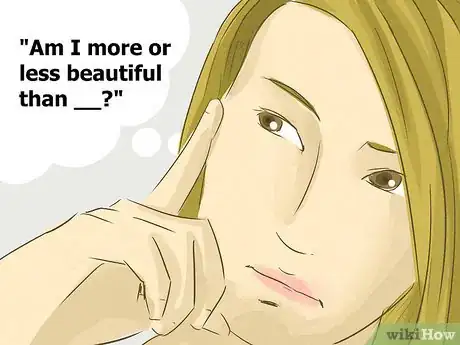

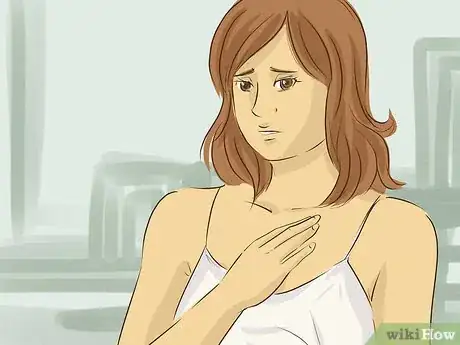
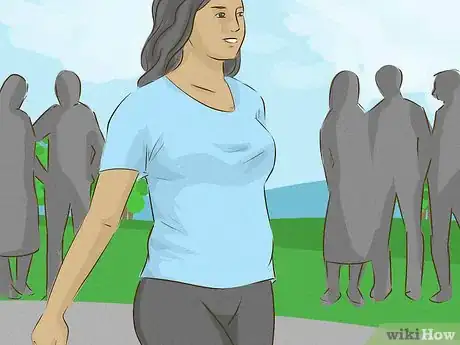
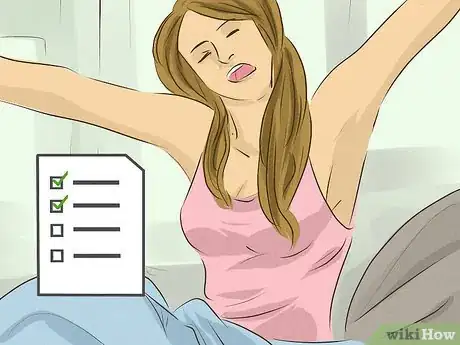
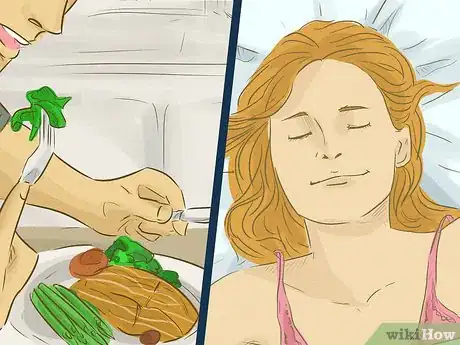




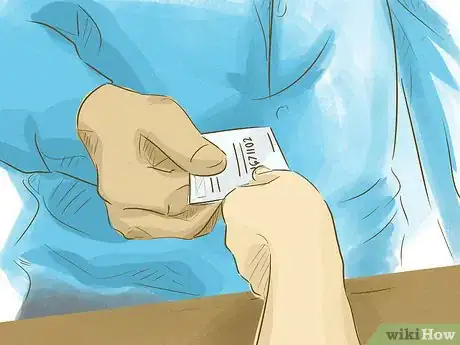


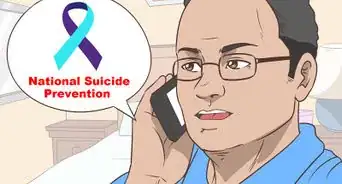



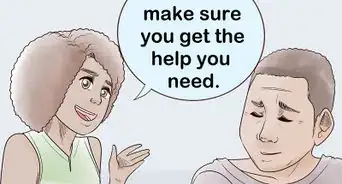



-Step-17-Version-2.webp)

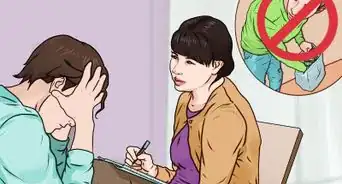


















































Medical Disclaimer
The content of this article is not intended to be a substitute for professional medical advice, examination, diagnosis, or treatment. You should always contact your doctor or other qualified healthcare professional before starting, changing, or stopping any kind of health treatment.
Read More...